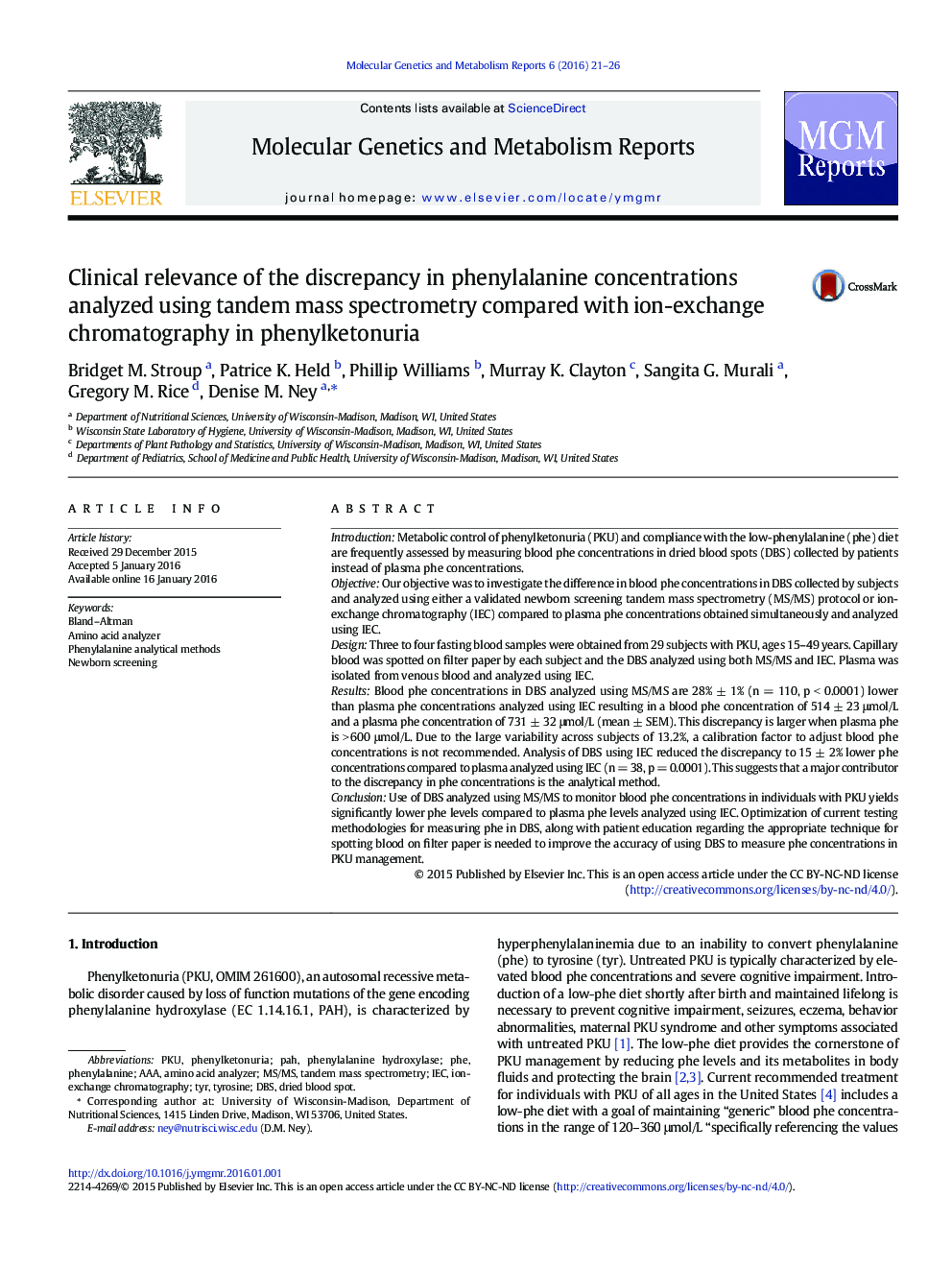| کد مقاله | کد نشریه | سال انتشار | مقاله انگلیسی | نسخه تمام متن |
|---|---|---|---|---|
| 2058853 | 1543980 | 2016 | 6 صفحه PDF | دانلود رایگان |
• Phe concentration in dried blood spots is significantly lower than plasma phe.
• Blood phe concentration cannot be adjusted due to large variability across subjects.
• Analysis of dried blood spots using IEC instead of MS/MS improves accuracy.
• Plasma phe concentration using IEC is the most accurate for metabolic monitoring in PKU.
IntroductionMetabolic control of phenylketonuria (PKU) and compliance with the low-phenylalanine (phe) diet are frequently assessed by measuring blood phe concentrations in dried blood spots (DBS) collected by patients instead of plasma phe concentrations.ObjectiveOur objective was to investigate the difference in blood phe concentrations in DBS collected by subjects and analyzed using either a validated newborn screening tandem mass spectrometry (MS/MS) protocol or ion-exchange chromatography (IEC) compared to plasma phe concentrations obtained simultaneously and analyzed using IEC.DesignThree to four fasting blood samples were obtained from 29 subjects with PKU, ages 15–49 years. Capillary blood was spotted on filter paper by each subject and the DBS analyzed using both MS/MS and IEC. Plasma was isolated from venous blood and analyzed using IEC.ResultsBlood phe concentrations in DBS analyzed using MS/MS are 28% ± 1% (n = 110, p < 0.0001) lower than plasma phe concentrations analyzed using IEC resulting in a blood phe concentration of 514 ± 23 μmol/L and a plasma phe concentration of 731 ± 32 μmol/L (mean ± SEM). This discrepancy is larger when plasma phe is > 600 μmol/L. Due to the large variability across subjects of 13.2%, a calibration factor to adjust blood phe concentrations is not recommended. Analysis of DBS using IEC reduced the discrepancy to 15 ± 2% lower phe concentrations compared to plasma analyzed using IEC (n = 38, p = 0.0001). This suggests that a major contributor to the discrepancy in phe concentrations is the analytical method.ConclusionUse of DBS analyzed using MS/MS to monitor blood phe concentrations in individuals with PKU yields significantly lower phe levels compared to plasma phe levels analyzed using IEC. Optimization of current testing methodologies for measuring phe in DBS, along with patient education regarding the appropriate technique for spotting blood on filter paper is needed to improve the accuracy of using DBS to measure phe concentrations in PKU management.
Journal: Molecular Genetics and Metabolism Reports - Volume 6, March 2016, Pages 21–26
